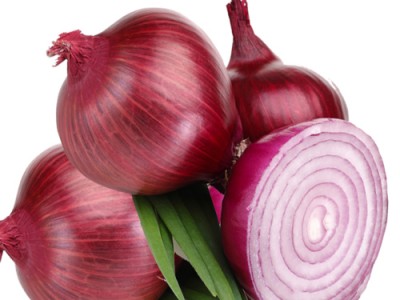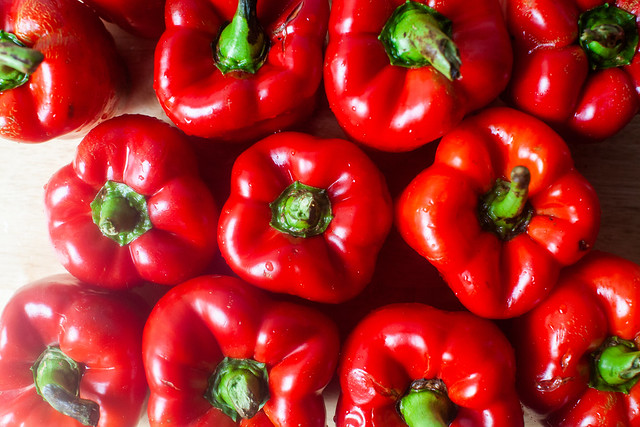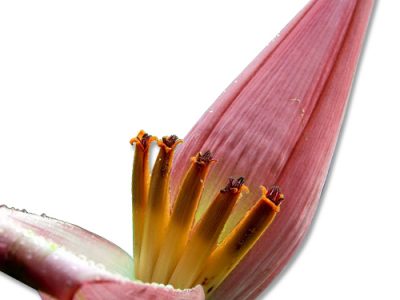

Red Bell Pepper Health Benefits And Nutrition Facts
Red Bell Pepper
Red bell pepper has various names and is referred as red pepper, capsicumor sweet pepper. These types of peppers are considered as fully mature versions of more bitter green bell peppers and belong to the nightshade family. These peppers are also considered a variety of capsicum annuum it includes cultivars like Jalapeno, cayenne pepper and few other types of peppers. While other types of peppers are also red in colour, only red bell pepper is colloquially known as “red bell pepper”. Red bell pepper began its domestication at central Mexico about 7500 years ago but, they are related to chilli peppers, tomatoes, and breadfruit all of which are the native to central to South America. These bell peppers were one of those varieties that were cultivated before the Spanish exploration in the 1400’s. Red peppers are now grown globally and remain popular for their sweet flavours used in many cuisines. From planting to harvest it typically takes 12 weeks for the first set of bell peppers to grow. Growing bell peppers in greenhouse yields better results than growing bell peppers in a garden. When chilli peppers and bell peppers are sometimes dried and powdered. In that case, these are referred to as Paprika.
Red Bell Pepper Health Benefits:
Some of the health benefits include –
- Red bell peppers are rich in Vitamin C and potassium which has powerful antioxidant that helps fight cell damage, boots immune system and responses to microbes and acts as an anti- inflammatory effect.
- These are also rich in Vitamin A and beta-carotene which helps offer good support to overall human vision and eye health concerns.
- Vitamin A also helps in healing skin wounds and boots white blood cell growth. Red bell peppers are low in calorie.
- These also contain healthy dose of fibre, folate and huge iron content.
- Red, yellow and orange bell peppers have less bitter taste than the green bell pepper.
- These are technically referred to as a fruit; half cup of raw red bell pepper provides 47 percentage of vitamin A intake and 159 percentage of vitamin C.
- Though these are referred to as fruit, these are staple in the vegetable produce section.
Red Bell Pepper Nutritional Values:
Interestingly, red bell peppers are considered as the only bell pepper variety that contains little to no capsaicin- a compound that is responsible for spiciness. Red bell peppers are rich in various sources of multiple vitamins, minerals and antioxidant compounds. Bell peppers are primarily composed of carbs, which account for most of their calorie content — with 3.5 ounces (100 grams) holding 6 grams of carbs. The carbs are mostly sugars — such as glucose and fructose — which are responsible for the sweet taste of ripe bell peppers. Bell peppers also contain small amounts of fibre — 2% by fresh weight. Calorie for calorie, they are a very good fibre source.
Red bell peppers contain:
- Vitamin A- red bell peppers are high in pro-Vitamin A which the body converts into vitamin A.
- Vitamin C- medium sized red bell peppers provide 169% of vitamin C.
- Vitamin E- is a considered a powerful antioxidant and is essential for health nerve system and muscles.
- Iron- red bell peppers are rich source of iron.
- Potassium- this essential mineral may help improve the heart health.
- Beta- Carotene
- Folate- Also known as vitamin B9, folate has a variety of functions in your body. Adequate folate intake is very important during pregnancy.
- Magnesium- a form of mineral rich vegetable is red bell pepper.
- Vitamin K1- a form of vitamin also known as phylloquinone, Vitamin K1 is important for blood clotting and bone health.
- Riboflavin
- Niacin
- Vitamin B6- this vitamin is important for formation of red blood cells – Pyridoxine is the most common type of vitamin B6.
Nutritional values based on per servings:
Half a cup of fresh, sliced red bell pepper contains calories – 23, sodium – 3 milligrams, Cholesterol- 0 milligrams, sugar- 3 grams, fibre- 1 gram, carbohydrates- 4 grams, water- 92 percentage and Fat- 0 grams.
Uses of red bell pepper:
Red bell peppers are widely available across the U.S. and we can easily find them in all supermarkets and farmers markets around various countries. These vegetables are popular, colourful and are easy to grow. They have bright colours, sweet flavours which makes them an excellent source of addition to a variety of dishes and cuisines. Some of the recipes that red bell peppers can be used are; sliced red bell peppers can be stuffed with quinao and pistachios and roast them together, these are also used as toppings for pizzas, burgers and sandwiches can also be added in omelette and frittatas. These can add a great flavour to various combinations of salads along with other vegetables and fruits. Varieties of bell peppers are used in most of the Mexican cuisines. The various colours found in variety of bell peppers make all types of cuisines appear colourful, bright and flavourful with lot of nutritional benefits and health improving benefits.
Pointers to be considered:
It is considered quite to digest red bell peppers. However, there are people who would face some difficulty in digesting bell peppers. Such group of individuals are advised to partially roast the bell peppers before consuming the fruit like vegetable. Some of the difficulties faced consuming the bell peppers raw are diarrhoea, stomach aches since these individuals find it tough breaking down the tough skin of bell peppers. By roasting or removing the skin of bell peppers would yield in better digestion.
Other plant compounds:
The main compounds include:
- Lutein: These are found in abundant in green bell peppers and black paprika. Lutein is absent in ripe bell peppers.
- Luteolin: Similar to quercetin, luteolin is an polyphenol antioxidant that may have a variety of beneficial health effects.
- Quercetin: it’s a polyphenol antioxidant is beneficial for preventing many chronic conditions.
- Violaxanthin: This compound is the most common carotenoids antioxidant found in red and yellow bell peppers.
- Capsanthin: Especially high in red bell peppers, capsanthin is a powerful antioxidant responsible for their brilliant red colour.

